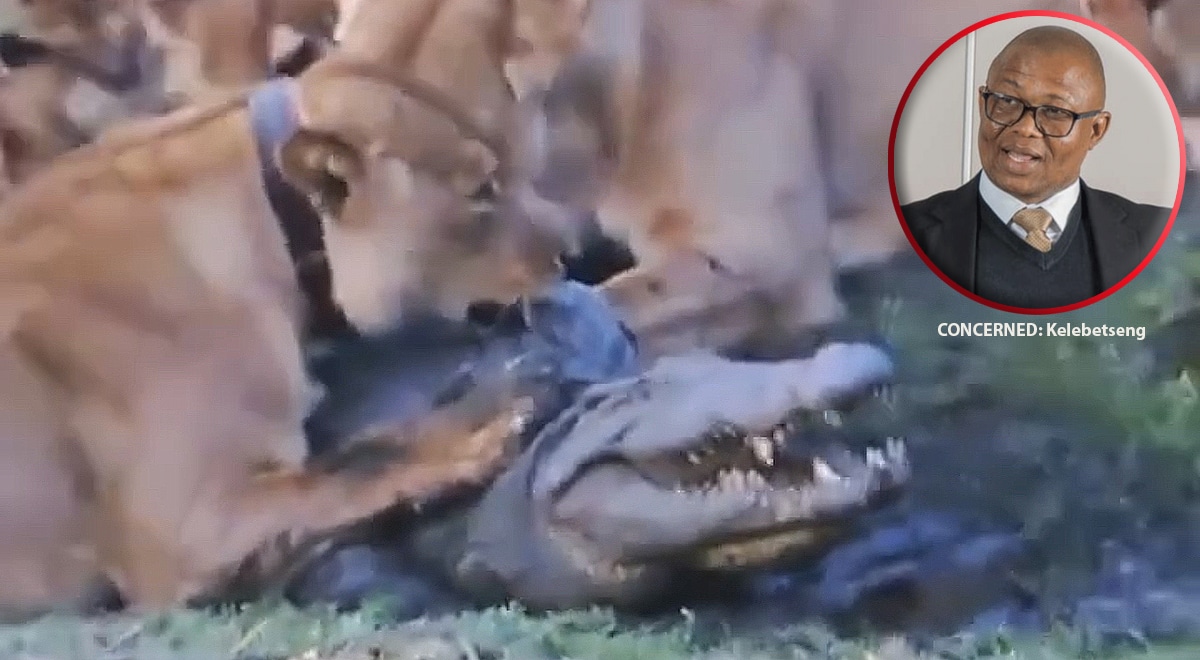Wildlife crime is said to be on the rise in the Northwest District, with lions and crocodiles being targeted for their nails and bones by poachers.
When opening the full council meeting last Monday, the District Council’s chairperson, Itumeleng Kelebetseng said poaching of these apex predators is mainly for their nails and bones which are believed to be used for traditional rituals.
“I am reliably informed that the wildlife crime in the form of poaching is rife in the district. Both commercial and subsistent poaching seem to be rising at the same rate, with antelopes, giraffes and elephants being greatly targeted. Predators such as lions and crocodiles are also killed unlawfully for collection of their nails and bones for use in ritual practices,” stated Kelebetseng.
Without explaining further on the subject, Kelebetseng further noted that elephant poaching is the most prominent in the Northern parts of the district and is believed to be conducted mainly by foreign individuals from neighbouring countries. “Department of Wildlife and National Parks (DWNP) together with other law enforcement agencies continue to work tirelessly to curb these illegal activities. However, shortage of resources like vehicles and aerial support in some instances hampers anti-poaching efforts.”
Kelebetseng pleaded with other Councillors to communicate with their electorates to assist in curbing this illegal off take of wildlife.
Another concern regarding wildlife in the area, Kelebetseng explained, is the escalating reports of wild animals intruding farming land and causing damage to property, killing livestock and generally being a nuisance to communities in the district due to scarcity of water. “The community is encouraged to report dangerous animals sighting promptly and desist from engaging in risky activities that might end with loss of life or injury.
Currently the Northwest District which is a home to thousands of animal species is experiencing drought due to low rainfall experienced in the last rain season.
Rivers, lagoons and all water bodies in the area have dried up or are drying up and this means there is severe shortage of forage for animals and according to Kelebetseng, as a result hundreds or hippos are stranded in clusters across the district with little to no-water. “DWNP has taken steps to pump water and provide feed for hippos at the highest populated lagoon in Nxaraga. The hope is that this will be a short-term intervention while the floods slowly make their way downstream.”
He further noted that the department was considering relocating some of the hippos to the delta where there is sufficient water.
Meanwhile the annual floods from Okavango Delta into Thamalakane river is reportedly tens of kilometers away and demonstrating variations in flow regimes and deviating from the historical high flows as a result of a series of years of below normal rainfall patterns upstream in Angola and Namibia and over the delta itself.
The floods are said to have passed Xaxaba settlement and last week were recorded to be 73 kilometers away from the Boro-Thamalakane junction and flowing at an average speed of 1.7 kilometers per day.
The Xudum river flood is said to be 81 kilometers from reaching Nxaraga village and flowing at a velocity of 0.68 kilometers per day.
The flow pattern is said to be impacted by noticeable existence of aquatic vegetation blockages along some sections of the river system in the lower Okavango Delta.
“These blockages consist mainly of papyrus (koma) and vassia grass (mojakubu) that tend to impact on the natural river flows by causing flow diversions and diminution,” he said







